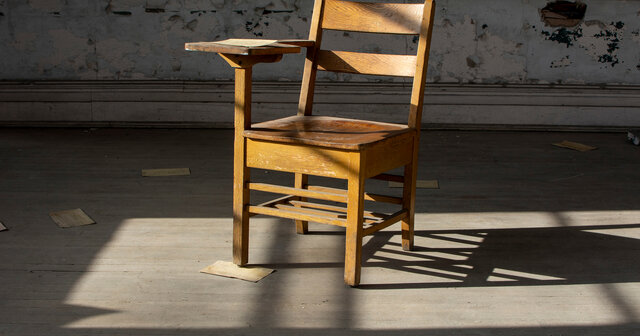
By
This article originally appeared in the Lansing State Journal May 14, 2025.
Voters rejected a second consecutive school bond proposal in St. Johns and by a larger margin than the first. There appears to be a disconnect between the priorities of voters in the St. Johns School District and those of school officials.
They’re not alone.
In the May special election, 44 Michigan school districts asked taxpayers for $1.2 billion to finance new facilities and building repairs, and voters rejected more than half of these bond proposals. Margins against new school debt ran higher than two-thirds in some districts.
At the same time, school officials hailed a new report in March that claimed districts need to spend nearly $23 billion over the next decade to fix school buildings. School leaders say they need more money for buildings, but voters aren't buying it.
School districts come in all shapes and sizes, and any number of factors can influence why a bond proposal fails. The proposals on the ballot this May varied significantly, ranging from $285 million in Midland to $2.9 million for Bentley Community Schools in Genesee County.
One should be cautious when generalizing, but some trends emerge from these results.
The larger the bond proposal, the more likely it was to fail. Seven of the 10 largest proposals failed, while more than half of the smallest 20 passed. The tax rate mattered, too: The higher the millage rate, the less likely a bond was to pass.
School officials can learn from these trends. Taxpayers appear skeptical of the value of paying higher taxes to fund school facilities. Voters may be signaling that districts should focus less on flashy new facilities and more on fiscal responsibility.
But what about the School Finance Research Foundation’s report claiming Michigan needs to make big investments in its schools? Are taxpayers being short-sighted by rejecting these bond proposals? That $23 billion headline figure omits important context about school spending in Michigan.
The report makes no mention of what school districts already spend on building construction and upgrades. Public schools spent $2.7 billion last year. Michigan taxpayers may already be supplying districts with enough revenue to cover the estimated costs of necessary repairs.
There is also reason to doubt some of the assumptions the foundation used to generate the report’s results. The report estimates that it costs an average of $644 per square foot to construct the new school buildings Michigan needs, or $580,000 for an average sized classroom. That is more than twice the cost the state treasurer allowed districts to estimate for new construction costs when applying for a state-backed school bond loan in 2023. Autodesk, a construction software company, estimates school buildings in the Midwest cost between $290 and $242 per square foot to build.
It is not clear why the report’s estimates for new builds are inflated. The report that’s publicly available does not provide much detail about how these decisions were made.
To their credit, the report’s authors do temper the value of their results. The report “provides a rough order of magnitude repair and new construction cost data” but “does not definitively determine a recommended investment.”
Later, the report warns: “The actual repair or replacement costs will differ from those reported.” In other words, school districts may need $23 billion over the next decade, or they may not.
The Legislature spent $20 million to produce this report. But the latest school bond election results indicate that taxpayers were not be persuaded. School districts need to demonstrate to voters that they are investing scarce taxpayer resources responsibly. Officials will need to do more than wave around this expensive and unconvincing report to win over voters.
Permission to reprint this blog post in whole or in part is hereby granted, provided that the author (or authors) and the Mackinac Center for Public Policy are properly cited.
Get insightful commentary and the most reliable research on Michigan issues sent straight to your inbox.

The Mackinac Center for Public Policy is a nonprofit research and educational institute that advances the principles of free markets and limited government. Through our research and education programs, we challenge government overreach and advocate for a free-market approach to public policy that frees people to realize their potential and dreams.
Please consider contributing to our work to advance a freer and more prosperous state.

Donate | About | Blog | Pressroom | Publications | Careers | Site Map | Email Signup | Contact